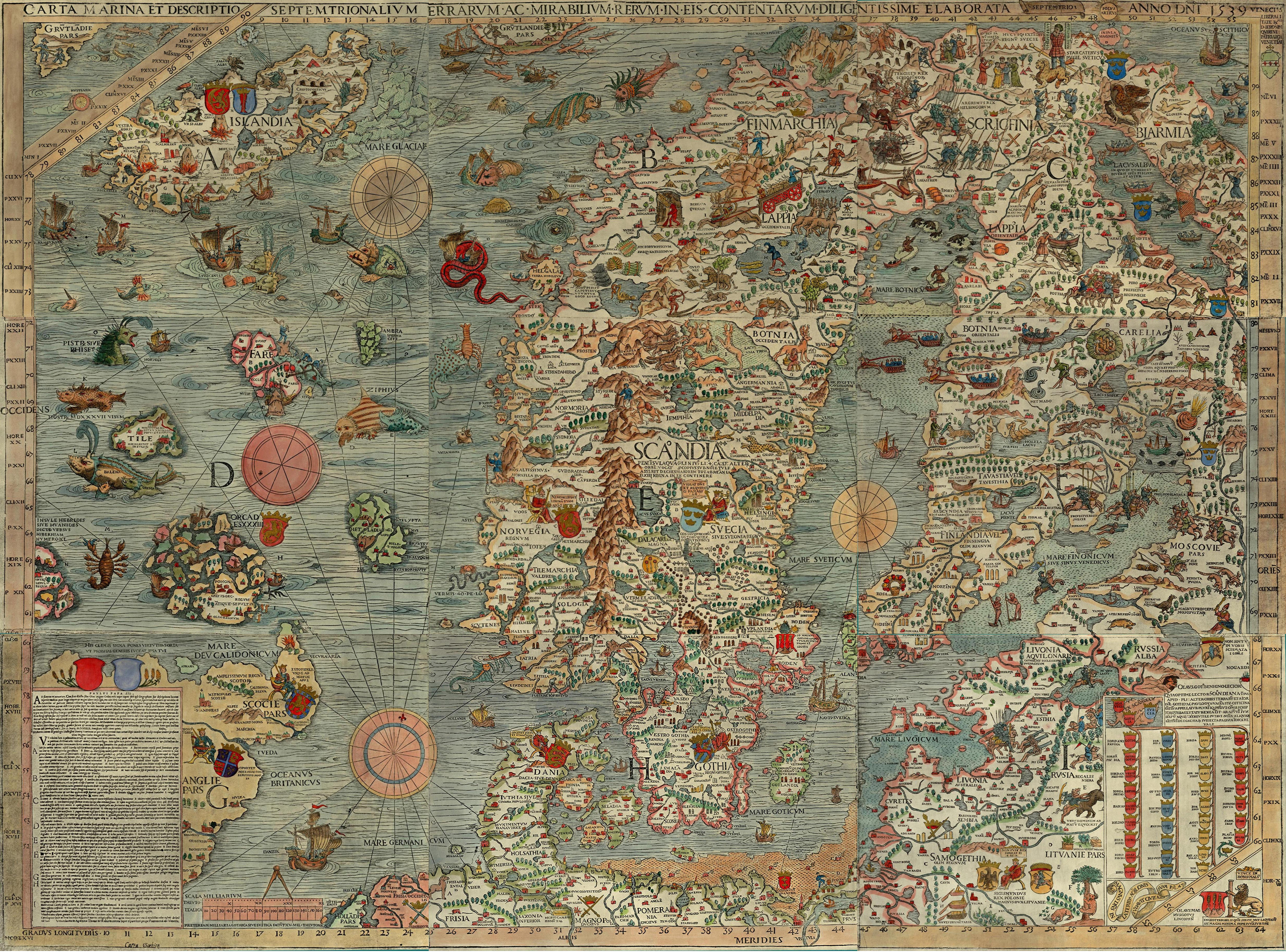Finningia on:
[Wikipedia]
[Google]
[Amazon]
 ''Finningia'' is one of the
''Finningia'' is one of the
 ''Finningia'' is one of the
''Finningia'' is one of the Latin
Latin ( or ) is a classical language belonging to the Italic languages, Italic branch of the Indo-European languages. Latin was originally spoken by the Latins (Italic tribe), Latins in Latium (now known as Lazio), the lower Tiber area aroun ...
names for Finland
Finland, officially the Republic of Finland, is a Nordic country in Northern Europe. It borders Sweden to the northwest, Norway to the north, and Russia to the east, with the Gulf of Bothnia to the west and the Gulf of Finland to the south, ...
, along with ''Fennia'', ''Finnia'' and ''Finlandia''. The name first appeared in ''Carta marina'', the Scandinavian map from 1539 created by the historian and cartographer Olaus Magnus
Olaus Magnus (born Olof Månsson; October 1490 – 1 August 1557) was a Swedish writer, cartographer, and Catholic clergyman.
Biography
Olaus Magnus (a Latin translation of his Swedish birth name Olof Månsson) was born in Linköping in Octo ...
. Olaus Magnus placed ''Finlandia vel Finningia olim regnum'' ("Finlandia or Finningia, an ancient kingdom") around Southwest Finland
Southwest Finland (, ; ) is a Regions of Finland, region ('','' ) of Finland. It borders the regions of Satakunta, Pirkanmaa, Tavastia Proper, Tavastia Proper (Kanta-Häme), Uusimaa, and Åland. The regional capital and most populous city is Tu ...
, suggesting an unhistorical past kingdom of Finland.
In ''Naturalis Historia
The ''Natural History'' () is a Latin work by Pliny the Elder. The largest single work to have survived from the Roman Empire to the modern day, the ''Natural History'' compiles information gleaned from other ancient authors. Despite the work' ...
'' ("Natural History"), Pliny the Elder
Gaius Plinius Secundus (AD 23/24 79), known in English as Pliny the Elder ( ), was a Roman Empire, Roman author, Natural history, naturalist, and naval and army commander of the early Roman Empire, and a friend of the Roman emperor, emperor Vesp ...
mentions the island of '' Aeningia'' (with variant spellings such as ''Einingia'' and ''Eningia'') as a "nearly equally large island" after ''Scatinavia''. Johannes Magnus
Johannes Magnus (a modified form of Ioannes Magnus, a Latin translation of his birth name Johan Månsson; 19 March 1488 – 22 March 1544) was the last functioning Catholic Archbishop in Sweden, and also a theologian, genealogist, and histor ...
, the brother of Olaus Magnus, suggested in his ''Historia de omnibus Gothorum Sueonumque regibus
The ''Historia de omnibus Gothorum Sueonumque regibus'' (''History of all the kings of the Geats and the Swedes'') is a posthumously published, partly pseudo-historical work by Johannes Magnus, Sweden's last Catholic archbishop. In 1554 (ten ye ...
'' (published posthumously in 1554) that this name should be read as ''Finningia''.
However, there is no agreement on what Pliny meant by ''Aeningia''. The scholar and cartographer Jacob Ziegler
Jacob Ziegler (c. 1470/71 – August 1549) was a humanist and theologian from Landau an der Isar in Bavaria. He was an itinerant scholar of geography and cartographer, who lived a wandering life in Europe. He studied at the University of Ingol ...
placed ''Finlandia'' and ''Einingia'' next to each other in Southwest Finland in his map from 1532, and the French classical scholar Jean Hardouin
Jean Hardouin (; ; ; 23 December 1646 – 3 September 1729), was a French priest and classical scholar who was well known during his lifetime for his editions of ancient authors, and for writing a history of the ecumenical councils. However, he ...
believed that ''Aeningia'' referred to the area of modern Finland. Louis Poinsinet de Sivry and others have argued that it instead referred to the area of the present-day Baltic States
The Baltic states or the Baltic countries is a geopolitical term encompassing Estonia, Latvia, and Lithuania. All three countries are members of NATO, the European Union, the Eurozone, and the OECD. The three sovereign states on the eastern co ...
. Valentin Parisot has suggested that ''Aeningia'' might refer to the island of Zealand
Zealand ( ) is the largest and most populous islands of Denmark, island in Denmark proper (thus excluding Greenland and Disko Island, which are larger in size) at 7,031 km2 (2715 sq. mi.). Zealand had a population of 2,319,705 on 1 Januar ...
, where there is a village by the name ''Hejninge''.
References
{{Finland-hist-stub Baltic Sea Historical geography of Finland Latin words and phrases